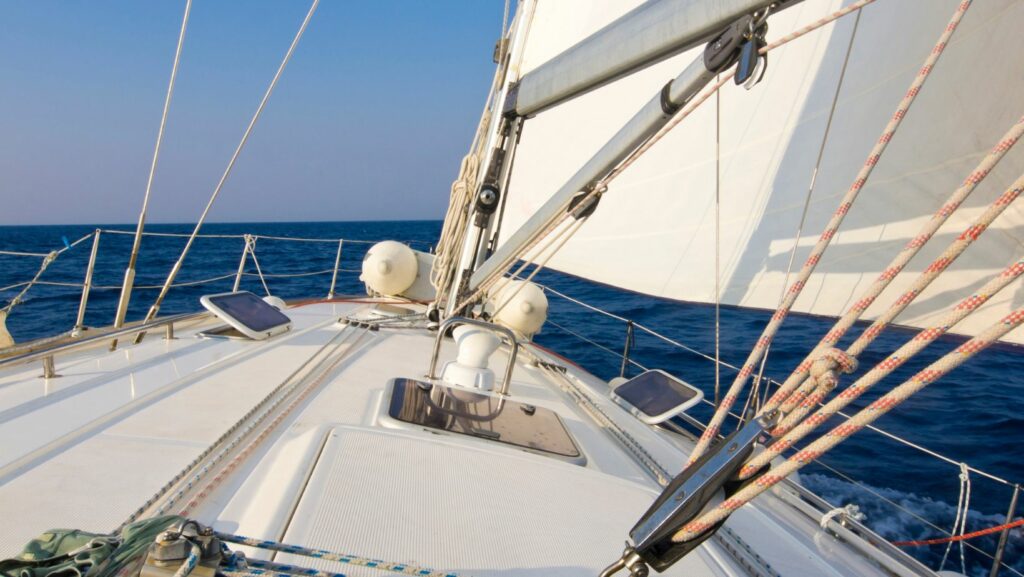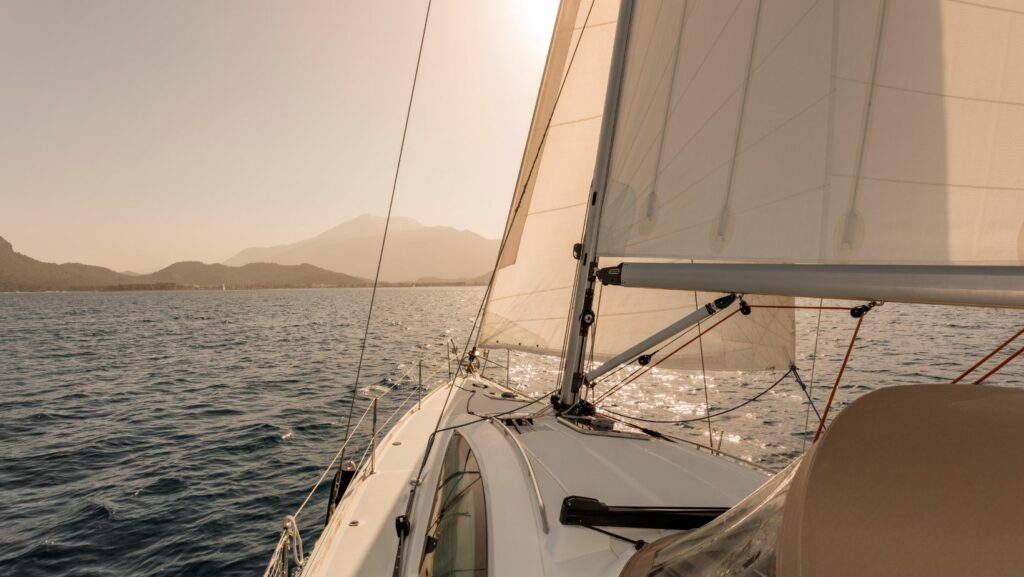
Sailboats rely on wind to move across the water. The wind fills the sails and propels the boat forward. The amount of wind needed to move a sailboat depends on the size and type of boat. Some sailboats can move in very light winds, while others require strong winds.
The connection between sailboats and wind is critical since sailboats need wind to move. The amount of wind, the direction the wind is blowing, and the intensity of the wind all contribute to how quickly a sailboat can go.
The velocity of the wind is key because it establishes how much power is pushing back against the sails. The more wind, the more force, and thus the quicker the sailboat can go. Although, an excess of wind can be an issue. If the winds are too potent, they can push the sails too forcefully, making it complicated for the sailboat to manage its speed and route.
The direction of the wind is significant too. Sailboats can only move when the wind is blowing in the correct direction. If the wind is blowing from behind the sailboat (referred to as a tailwind), it will propel the sails and assist the sailboat to go faster. If the wind is blowing towards the sailboat from the front (known as a headwind), it will slow down the sailboat.
The velocity of the wind also impacts how quickly a sailboat can go. If the winds are stronger, they will push against the sails more forcefully and make a sailboat go faster than if the winds are weaker.
All of these elements – the amount of wind, the direction of the wind, and the intensity of the wind – contribute to how quickly a sailboat can move. Sailors must be conscious of all three factors to sail proficiently.
What is the Relationship Between Sailboats and Wind?
The long-standing debate surrounding sailboats and wind is whether a sailing vessel can travel faster than the speed of the wind. Some people maintain that it is possible, while others believe that the wind speed is too strong for a sailing ship to move faster.
The Speed of a Sailboat
The speed of a sailboat is determined by the wind speed and the size and shape of the sails. Sailboats cannot move directly against the wind, but they can sail at an angle to the wind. The maximum angle a sailboat can be tilted into the wind without moving backwards is referred to as the “angle of heel.”

The Force of the Wind
The wind creates a force on the sailboat when it blows across the water’s surface. The speed of the wind determines how strong the force is. Additionally, the direction of the wind affects the force acting on the sailboat. If the wind is blowing towards the front of the sailboat, it will push the boat forward. However, if the wind is blowing towards the back of the sailboat, it will push the boat backwards.
Can a Sailing Ship Move Faster Than Wind Speed?
By Using the Wind to its Advantage
There are two types of forces at play when a sailboat is in motion: the wind pushing against the sails and the water pushing against the hull. The wind gives the sails a push from behind, while the water tries to resist the forward motion of the hull. In order to move forward, the sailboat needs to create more force than the water resistance. The key to a sailboat’s speed is its ability to use the wind to its advantage.
Three forces propel sailboats: friction from the hullmoving through water, thrust from sailspushing against air, and lift from keeland rudderkeeping it upright. The wind pushes against the sails and creates lift, which propels the boat forward. Lift is generated even if a boat isn’t moving; the faster the wind blows, the greater the force pushing against the sails.

A keel is a fin that extends below the hull of most sailboats. This keel helps prevent ships from capsizing and provides stability in windy conditions. Sailboats with shallower drafts can also move faster because they have less drag from friction with the water.
By Using the Sails to Create Lift
Sailboats can go faster than the windspeed by taking advantage of the sails to produce lift. The sails are similar to wings on an airplane–they generate lift when the wind blows across them. The amount of lift is based on the shape of the sails, the velocity of the wind, and the angle at which the wind hits the sails.
Conclusion
To conclude, it is evident that there is a clear relationship between sailboats and wind. Sailboats rely on wind to propel them forward, and the amount of wind impacts how fast a sailboat can go. When there is little to no wind, sailboats cannot move. The force of the wind also impacts the direction in which a sailboat will travel. If the wind is blowing from the side, the sailboat will be blown off course. In order to sail effectively, sailors must be aware of both the direction and strength of the wind.





